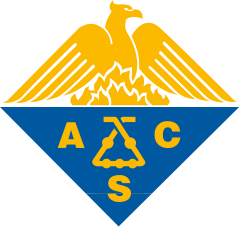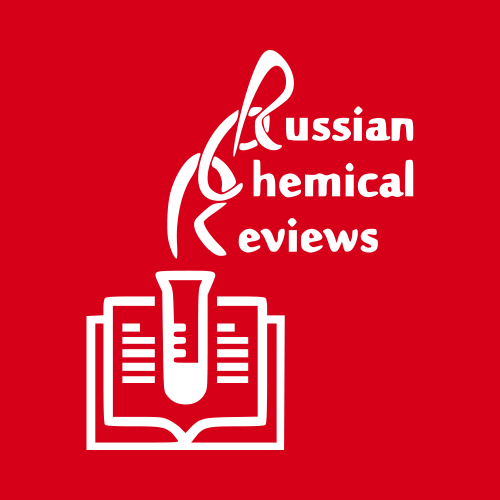Radical Carboxylative Cyclizations and Carboxylations with CO2
Publication type: Journal Article
Publication date: 2021-05-06
scimago Q1
wos Q1
SJR: 5.433
CiteScore: 30.7
Impact factor: 17.7
ISSN: 00014842, 15204898
PubMed ID:
33956436
General Chemistry
General Medicine
Abstract
Carbon dioxide (CO2) is not only a greenhouse gas and a common waste product but also an inexpensive, readily available, and renewable carbon resource. It is an important one-carbon (C1) building block in organic synthesis for the construction of valuable compounds. However, its utilization is challenging owing to its thermodynamic stability and kinetic inertness. Although significant progress has been achieved, many limitations remain in this field with regard to the substrate scope, reaction system, and activation strategies.Since 2015, our group has focused on CO2 utilization in organic synthesis. We are also interested in the vast possibilities of radical chemistry, although the high reactivity of radicals presents challenges in controlling selectivity. We hope to develop highly useful CO2 transformations involving radicals by achieving a balance of reactivity and selectivity under mild reaction conditions. Over the past 6 years, we along with other experts have disclosed radical-type carboxylative cyclizations and carboxylations using CO2.We initiated our research by realizing the Cu-catalyzed radical-type oxytrifluoromethylation of allylamines and heteroaryl methylamines to generate valuable 2-oxazolidones with various radical precursors. Apart from Cu catalysis, visible-light photoredox catalysis is also a powerful method to achieve efficient carboxylative cyclization. In these cases, single-electron-oxidation-promoted C-O bond formation between benzylic radicals and carbamates is the key step.Since carboxylic acids exist widely in natural products and bioactive drugs and serve as important bulk chemicals in industry, we realized further visible-light-promoted carboxylations with CO2 to construct such chemicals. We have achieved the selective umpolung carboxylations of imines, enamides, tetraalkylammonium salts, and oxime esters by successive single-electron-transfer (SSET) reduction. Using this strategy, we have also realized the dearomative arylcarboxylation of indoles with CO2. In addition to the incorporation of 1 equiv of CO2 per substrate, we have recently developed a visible-light photoredox-catalyzed dicarboxylation of alkenes, allenes, and (hetero)arenes via SSET reduction, which allows the incorporation of two CO2 molecules into organic compounds to generate valuable diacids as polymer precursors.In addition to the two-electron activation of CO2, we sought to develop new strategies to realize efficient and selective transformations via single-electron activation of CO2. Inspired by the hypothetical electron-transfer mechanism of iron-sulfur proteins, we have realized the visible-light-driven thiocarboxylation of alkenes with CO2 using catalytic iron salts as promoters. The in-situ-generated Fe/S complexes are likely able to reduce CO2 to its radical anion, which could react with alkenes to give a stabilized carbon radical. Moreover, we have also disclosed charge-transfer complex (CTC) formation between thiolate and acrylate/styrene to realize the visible-light-driven hydrocarboxylation of alkenes with CO2 via generation of a CO2 or alkene radical anion. On the basis of this novel CTC, the visible-light-driven organocatalytic hydrocarboxylation of alkenes with CO2 has also been realized using a Hantzsch ester as an effective reductant.
Found
Nothing found, try to update filter.
Found
Nothing found, try to update filter.
Top-30
Journals
|
5
10
15
20
25
30
|
|
|
Angewandte Chemie
28 publications, 7.67%
|
|
|
Angewandte Chemie - International Edition
28 publications, 7.67%
|
|
|
Organic Letters
24 publications, 6.58%
|
|
|
Green Chemistry
20 publications, 5.48%
|
|
|
Journal of Organic Chemistry
15 publications, 4.11%
|
|
|
ACS Catalysis
14 publications, 3.84%
|
|
|
Chemical Communications
14 publications, 3.84%
|
|
|
Journal of the American Chemical Society
14 publications, 3.84%
|
|
|
Organic Chemistry Frontiers
14 publications, 3.84%
|
|
|
Science China Chemistry
10 publications, 2.74%
|
|
|
Organic and Biomolecular Chemistry
10 publications, 2.74%
|
|
|
Chinese Chemical Letters
9 publications, 2.47%
|
|
|
Chinese Journal of Chemistry
9 publications, 2.47%
|
|
|
Chinese Journal of Organic Chemistry
8 publications, 2.19%
|
|
|
Nature Communications
8 publications, 2.19%
|
|
|
Chemical Science
7 publications, 1.92%
|
|
|
Journal of CO2 Utilization
6 publications, 1.64%
|
|
|
Advanced Synthesis and Catalysis
6 publications, 1.64%
|
|
|
Chinese Journal of Catalysis
5 publications, 1.37%
|
|
|
Asian Journal of Organic Chemistry
5 publications, 1.37%
|
|
|
Chemistry - A European Journal
5 publications, 1.37%
|
|
|
Accounts of Chemical Research
4 publications, 1.1%
|
|
|
Catalysis Science and Technology
4 publications, 1.1%
|
|
|
Green Synthesis and Catalysis
4 publications, 1.1%
|
|
|
Microporous and Mesoporous Materials
3 publications, 0.82%
|
|
|
Journal of Catalysis
3 publications, 0.82%
|
|
|
Chem
3 publications, 0.82%
|
|
|
European Journal of Organic Chemistry
3 publications, 0.82%
|
|
|
Nature Synthesis
3 publications, 0.82%
|
|
|
Chemical Synthesis
3 publications, 0.82%
|
|
|
5
10
15
20
25
30
|
Publishers
|
10
20
30
40
50
60
70
80
90
100
|
|
|
Wiley
93 publications, 25.48%
|
|
|
American Chemical Society (ACS)
88 publications, 24.11%
|
|
|
Royal Society of Chemistry (RSC)
78 publications, 21.37%
|
|
|
Elsevier
57 publications, 15.62%
|
|
|
Springer Nature
25 publications, 6.85%
|
|
|
Shanghai Institute of Organic Chemistry
8 publications, 2.19%
|
|
|
Science in China Press
3 publications, 0.82%
|
|
|
OAE Publishing Inc.
3 publications, 0.82%
|
|
|
Oxford University Press
3 publications, 0.82%
|
|
|
Georg Thieme Verlag KG
2 publications, 0.55%
|
|
|
The Electrochemical Society of Japan
1 publication, 0.27%
|
|
|
MDPI
1 publication, 0.27%
|
|
|
Autonomous Non-profit Organization Editorial Board of the journal Uspekhi Khimii
1 publication, 0.27%
|
|
|
Pleiades Publishing
1 publication, 0.27%
|
|
|
Tsinghua University Press
1 publication, 0.27%
|
|
|
10
20
30
40
50
60
70
80
90
100
|
- We do not take into account publications without a DOI.
- Statistics recalculated weekly.
Are you a researcher?
Create a profile to get free access to personal recommendations for colleagues and new articles.
Metrics
365
Total citations:
365
Citations from 2024:
187
(51%)
Cite this
GOST |
RIS |
BibTex |
MLA
Cite this
GOST
Copy
Ye J. et al. Radical Carboxylative Cyclizations and Carboxylations with CO2 // Accounts of Chemical Research. 2021. Vol. 54. No. 10. pp. 2518-2531.
GOST all authors (up to 50)
Copy
Ye J., Ju T., Huang H., Liao L., Yu D. Radical Carboxylative Cyclizations and Carboxylations with CO2 // Accounts of Chemical Research. 2021. Vol. 54. No. 10. pp. 2518-2531.
Cite this
RIS
Copy
TY - JOUR
DO - 10.1021/acs.accounts.1c00135
UR - https://doi.org/10.1021/acs.accounts.1c00135
TI - Radical Carboxylative Cyclizations and Carboxylations with CO2
T2 - Accounts of Chemical Research
AU - Ye, Jianheng
AU - Ju, Tao
AU - Huang, He
AU - Liao, Lili
AU - Yu, Da-Gang
PY - 2021
DA - 2021/05/06
PB - American Chemical Society (ACS)
SP - 2518-2531
IS - 10
VL - 54
PMID - 33956436
SN - 0001-4842
SN - 1520-4898
ER -
Cite this
BibTex (up to 50 authors)
Copy
@article{2021_Ye,
author = {Jianheng Ye and Tao Ju and He Huang and Lili Liao and Da-Gang Yu},
title = {Radical Carboxylative Cyclizations and Carboxylations with CO2},
journal = {Accounts of Chemical Research},
year = {2021},
volume = {54},
publisher = {American Chemical Society (ACS)},
month = {may},
url = {https://doi.org/10.1021/acs.accounts.1c00135},
number = {10},
pages = {2518--2531},
doi = {10.1021/acs.accounts.1c00135}
}
Cite this
MLA
Copy
Ye, Jianheng, et al. “Radical Carboxylative Cyclizations and Carboxylations with CO2.” Accounts of Chemical Research, vol. 54, no. 10, May. 2021, pp. 2518-2531. https://doi.org/10.1021/acs.accounts.1c00135.
















